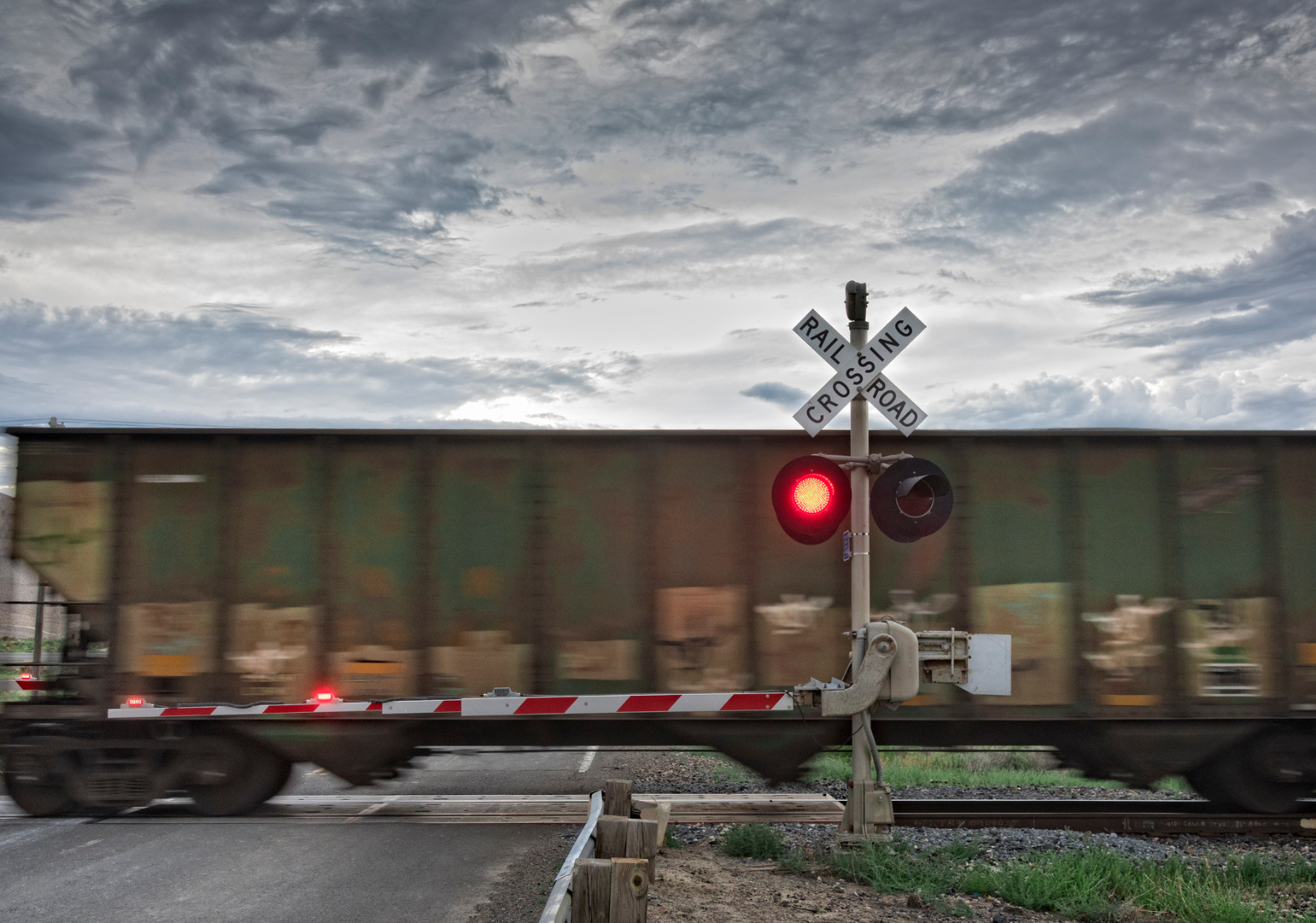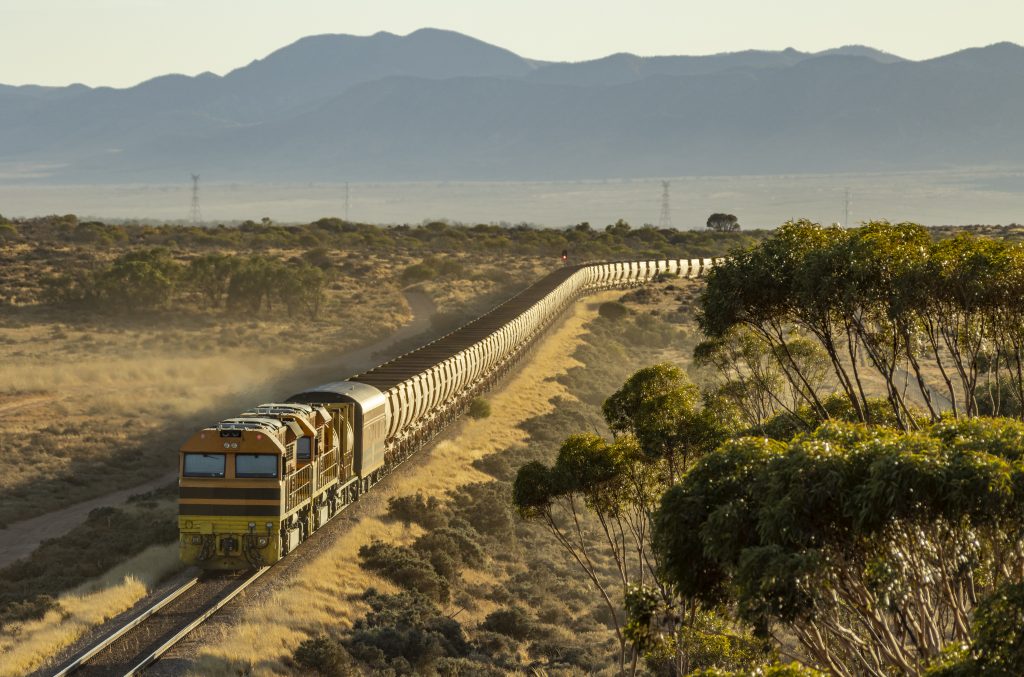With transport emissions increasing, Australia needs to consider more sustainable freight transportation options, such as reprioritising rail over road – but there are a few obstacles standing in the way.
Before the early 1960s, the vast majority of Australia’s domestic freight was transported by rail.
Now, rail’s share of non-bulk freight has dropped to a meagre 17 per cent. Between Australia’s most populous cities – Sydney and Melbourne – the proportion of freight transported by rail has dwindled to as low as two per cent.
By 2050, road freight is projected to experience 77 per cent growth; emissions from road freight are expected to grow too, jumping from 37 million t to 42 million t from 2020 to 2030. Yet the emissions generated by rail are expected to remain static at four per cent, with this mode of transport estimated to produce 16 times less carbon emissions than road freight for every kilometre travelled.
With the transport sector predicted to be the largest source of emissions by 2030 – at a time when all sectors are aiming to reduce their carbon footprint in the race towards net zero – now is the time to make a change.
Why did freight end up on roads?
There are two reasons why road freight transport superseded rail, according to University of Wollongong Associate Professor Philip Laird CompIEAust.
Over the past few decades, billions have been spent on productivity improvements in road freight through substantial upgrades to the national highway system.
This includes the progressive Hume Highway duplication, completed in 2013 and spanning 800 km between Sydney and Melbourne; it’s estimated to cost $20 billion.
“The Hume was converted from a basic two-lane road that went from town to town, to a modern dual carriageway with concrete pavements and better alignment that bypasses towns,” Laird, who is a Fellow of the Chartered Institute of Logistics and Transport, told create.
Then there’s the Bruce Highway upgrade in Queensland, initiated in 2013 – and still ongoing – which entails a $12.6 billion investment over 15 years.
Secondly, the upgrading of the Australian fleet to larger and heavier trucks – including “B-doubles”, prime movers towing two semi-trailers that are attached with B-couplings – in the 1990s also had a substantial impact.
“These two factors have allowed for an increase in road freight productivity,” Laird said.
By comparison, the government’s investment in interstate mainlines to improve track quality has not matched that of roads, leading to a less-than-efficient rail network. Despite the use of concrete sleepers and other improvements on the existing alignment, it is far from efficient.
“Since 2004, when the Australian Rail Track Corporation (ARTC) assumed a 60-year lease on the tracks, there has been no improvement to the Sydney-to-Melbourne rail corridor whatsoever,” Laird explained.
This track at times has also had too many temporary speed restrictions where the track maintenance is not up to scratch to avoid further damage – impacting the speed of rail freight delivery.
“Then there are permanent speed restrictions on the tight curves that have been there for more than 100 years,” Laird said. “What we have on the east coast of Australia, where most people live, is just not fit for purpose.”
What needs to change?
Back in 2001, the ARTC conducted a track audit to improve the steam-age track between the Sydney to Melbourne corridor. New sections include:
- 40 km of track between Macarthur and Mittagong
- 70 km of track from Goulburn to Yass
- 80 km of track from Yass to Cootamundra
“This would remove 260 km of steam-age alignment, reducing the total train transit time from an excess of 13 hours to 11 hours,” Laird said.
The upgrade would not only allow rail to become a competitive inner-city freight option but also reduce emissions by around 10 per cent.
While there are plenty of freight trains moving between the east and west coasts, the track needs to be upgraded to withstand 100-year weather events, as evidenced by the closure of Trans-Australian Railway line for almost a month in 2022 due to flood damage, which impacted 300 km of track near Tarcoola, South Australia.
Which states are getting it right?
The Queensland Rail Mainline Upgrades between Brisbane and Cairns – undertaken during the 1990s – provides an apt blueprint of what needs to take place to improve the east coast rail network.
The upgrade entailed 200 km of track rebuilt to modern engineering standards, which included track straightening, and easing grades and curves to accommodate faster and heavier freight trains – allowing the weight of load behind a locomotive to increase from 750 t to 1500 t.
“That helped to keep Brisbane to Cairns freight on rail, increasing the modal share on that corridor at a time when the Sydney to Melbourne corridor was losing freight from rail to road,” Laird said.

This upgrade was also delivered at a modest cost, averaging $1.3 million / km, which Laird acknowledges would be significantly higher today. But if the same scope of work was completed between Sydney and Melbourne, the benefits would outweigh the costs.
“If we were to upgrade the rail lines on a modest amount compared with our highway investments, this would not only make freight trains quicker, they’d use appreciably less fuel,” he said. “Then we could divert some freight from road to rail.”
Meanwhile, over in the west, the four iron ore rail lines are top notch – with axle nodes, energy efficiency and enhanced productivity – moving nearly 900 million t annually.
“The Western Australian government is also taking very definite steps to improve the efficiency of rail freight,” Laird said.
Furthermore, an incentive system has meant that the Fremantle Port has the highest percentage of containers on the road.
“For every eligible container brought to the Fremantle Port by rail, there is a $50 payment,” he said.
What about internationally?
The international competitiveness of our freight systems should be improved to produce efficient environmental and economic outcomes by increasing the contribution of rail and shipping, according to Laird.
“Many a wheat farmer has observed that Canada can get wheat over longer distances and at less cost to a sea port than Australia,” he said.
Canadian Pacific (CP) and Canadian National (CN) railways move wheat using trains with 32-t axle loads versus Australia’s 25-t axle on mainlines, with even less on branch lines. Canadian wheat trains are also longer, measuring up to 2.3 km, and faster-moving.
“Since CP moved to introduce new grain trains with more payload per wagon, they have experienced a big increase in rail freight productivity,” Laird said.
“If Australian freight efficiency lifts towards Canadian standards, there’s potential to save around four million t of carbon emissions per year.”
What other policy changes are required?
With an upgraded road highway network already in place, efforts are being made to decarbonise road freight transport, including utilisation of bigger, heavier, zero-emissions vehicles to improve efficiencies – particularly for short-term freight.
But heavier trucks means more pavement wear and tear, or what engineers call the “fourth power law”.
“If you double the axle load of a truck, then the road wear and tear goes up 16-fold,” Laird said. “That means a laden semi-trader will do 10,000 times the road wear and tear of an average family car, but they are certainly not paying 10,000 times the road user charges.”
A change in taxation and fiscal policy instruments, such as increasing the rate of distance-based tax could encourage uptake of more sustainable transport.
“If all Australian B-doubles and semi-trailers were placed on current New Zealand road user charges, they would be paying $2 billion a year more,” Laird said.
But this isn’t to say that the public sector hasn’t recognised the need to reduce transport emissions by taking action to bring more freight back onto rail.
“The federal government brought forward its review of its National Freight and Supply Chain Strategy, which is with a refreshed strategy due for release this year,” Laird added.
What’s happening in the private sector?
The east coast is ramping up efforts to revitalise freight services through the development of intermodal transport hubs in Brisbane, Melbourne and Sydney. In Melbourne, a new intermodal terminal is being built by the private sector at Somerton at a cost of $400 million.
The investment in two rail terminals at Sydney’s Moorebank Intermodal Precinct, run by the federal government agency National Intermodal, includes:
- An IMEX (Import Export) Rail Terminal
- An Interstate Rail Terminal
- More than 850,000 m2 of warehousing
- Inter-connecting road links (M5 and M7) and rail links (Southern Sydney Freight Line)
There has been significant private investment in the facility by Qube to the tune of $600 million. In addition, there has been a cost outlay to purchase new locomotives by companies such as Qube and Pacific National.
“Next Moorbank’s facility Woolworths is investing in two distribution centres – one national and one regional,” Laird said. “On that site, there is nearly $2 billion worth of investment in intermodal rail freight.”
But once a loco leaves the South Sydney freight line and travels past MacArthur, it will hit steam age track – which conjures up an important question.
“Where is the public investment by the leasees of the track to complement the current private sector investment in rail freight?”
